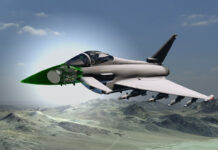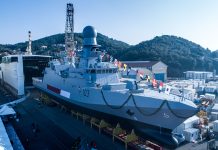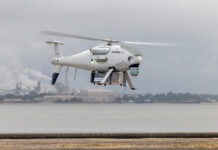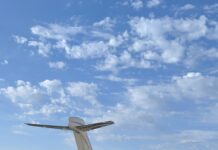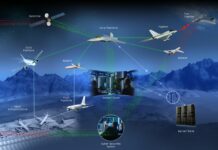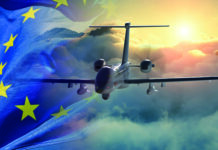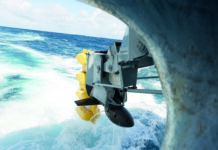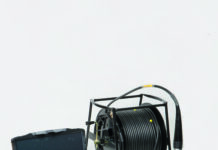The increasing number of countries procuring or interested in submarines programmes have pushed NATO’s and worldwide main navies and air forces to look for upgrading or procuring new ASuW/ASW platforms, commonly classified as Maritime Patrol Aircraft.
The increasing underwater threat in main seas basins – from the North Atlantic to Pacific Ocean passing through Mediterranean Sea and Indian Ocean – requires long-range Maritime Patrol Aircrafts (MPAs) capable of accomplishing a range of missions from ASW to intelligence collection to satisfy operational requirements and to justify the higher procurement and life-cycle costs. More recently, due to technological evolution and miniaturisation, the highly-capable ASW airborne systems are allowing the new class of long-range business jets to become an alternative and lower-cost solution compared to larger platforms. their effectiveness and flexibility still needs to be proven on the field. The following overview of available ASuW/ASW platforms and those under development also include the less-capable turboprop-equipped MPAs, which also represent a cost-effective solution.
The Heavier ASuW/ASW Platforms
Developed to replace the well-operated though aging P-3 aircraft and having achieved initial operational capability with the US Navy in November 2013, the Boeing P-8A POSEIDON or Multi-mission Maritime Aircraft (MMA) has found worldwide export success, having been procured by Australia, India, Norway, New Zealand, South Korea and UK. Based on the Boeing 737-800 with 737-900 wings, the P-8A POSEIDON is a purpose-built military aircraft with a maximum take-off weight of 85.8 tonnes, a 4,000 nm self-deployment capability extendable with air-refuelling, and a mission radius of 1,200 nm with a four-hour on station time. With an average transit speed of 340 knots and a maximum airspeed of 400 knots, the P-8A can operate both at high and low altitudes with a load factor of +2.2g/-0.5 g and a 165-metres sustained turn radius of circa 990 metres. With a crew of nine, including two pilots, the internal layout sees a resting area, electronics cabinets, mission management area, rear electronics cabinet and sonobuoy stowage and launching areas. The P-8A is equipped with a rear underbelly weapon bay with five hardpoints for weapon systems, including torpedoes, mines and Search & Rescue (SAR) Kit, four underwing and two fuselage-mounted hardpoint for HARPOON anti-ship missiles and other payloads such as long-range side-looking radars.

The mission suite is centred on the tactical managing system with five consoles equipped with dual, ultra-high-resolution 24 inch displays and a communications package, including plain/secure V/UHF, UHF radios, military and INMARSAT SATCOM, datalink Link 11/16, tactical data links, and secure connectivity. The sensors package features the Raytheon AN/APY-10 multimode radar with ISAR/SAR modes and IFF interrogation, Wescam MX-20HD EO/IR turret and Lockheed Martin ALQ-240 ESM together with weapon and stores management system, and self-protection with the AN/AAR-54 missile warning system (MWS), AN/AAQ-24(V) LAIRCM and ALE-47 counter-measures dispensing system (CMDS). The ASW suite is based on AN/AAQ-2(V)1 acoustic system capable of receiving, processing and recording 64 channels of passive and active data, including sonobuoy positioning and a multi-static active coherent (MAC) system. The latter is designed to provide an enhanced wide-area acoustic search capability by processing multiple returns from a field of active and passive GPS-embedded sonobuoys, of which the P-8A carries 126 different types. Initial MAC capability (Phase I) was introduced on board the P-8A in 2015 while Phase II is expected in 2024.
The Indian Navy’s P-8I differs mainly due to the addition of CAE AN/ASQ-508A Magnetic Anomaly Detection (MAD) system, an extra rear-facing APS-143C(V)3 surveillance radar to ensure 360 degrees coverage and Indian companies’ data link, SATCOM and secure communications. The US Navy plans to incrementally improve baseline P-8A capabilities by integrating the Advanced Airborne Sensor (AAS) represented by Raytheon APS-154 radar, AGM-84 HARPOON Block II+, and High Altitude ASW Weapon Capability (HAAWC) MK 54 torpedo to allow high-altitude operations with platform sensors improvements, in addition to ASW signals intelligence sensors, and avionics architecture improvements. With the P-8A Increment Three Programme, the US Navy will introduce significant war-altering ASW enhancements through combat system hardware, architecture, ASW/ASuW sensors improvements, communication capability upgrades, ASuW Net Enabled Weapon (NEW) and ‘Higher-Than-Secret’ (HTS) security capabilities.
Specifically developed by the Japanese aerospace and defence industry as a dedicated ASW MPA platform to replace the P-3C within the Japan Maritime Self-Defence Force (JMSDF), the Kawasaki Heavy Industries P-1 MPA platform has been attracting a lot of interest and been presented worldwide to potential customers in Europe, Asia and the Pacific. Combining performance at both high-altitude/high-speed and low-altitude/low-speed due to a large wing area and high limit load factor, together with a four-engines configuration based on new Ishikawajima-Harima Heavy Industries F7-10 high-bypass ratio two-spool turbofans (achieving high-reduction in fuel consumption and noise), the P-1 has a basic take-off weight of 79.7 tonnes. With a cruise speed of 450 knots and a cruise altitude of 11.880 metres, the range stands at 8,000 km, which allows for a 1,320 nm operating radius with four-hour on-station (higher than P-3C and P-8 counterparts), operating from JMSDF air bases, as the platform does not possess in-flight refuelling capabilities.
Equipped with the first operational fly-by-light flight control system, as well as a large windshield compared to commercial platforms and bubble windows for superior visibility, the P-1 features a large fuselage cross-section with a wide front-underbelly area with eight hardpoints for torpedoes and other weapon systems in addition to the same number of underwing hardpoints (each capable of 1000 kg) for a total payload of circa nine tonnes, including ASM-C1 and HARPOON anti-ship and AGM-65 MAVERICK air-to-surface missiles. With a 13-crew complement, the flight deck accommodates two pilots, one flight engineer and one observer and a glass cockpit with multi-function displays and HUDs.

The Toshiba HYQ-3 Advanced Combat Direction System (ACDS) is managed by six operators – including four dedicated sensor stations as well as tactical co-ordinator and navigation/communication operator consoles. Featuring artificial intelligent-applied technology, the ACDS controls a communications suite with UHF/VHF and SATCOM and tactical data with Link 16 and a sensors package – including Toshiba HPS-106 AESA radar with four antennas featuring Gallium Nitride technology with periscope detection from high altitude and SAR/ISAR functions, HPX-105 IFF, Fujitsu HAQ-2 HD EO/IR turret, Mitsubishi HLR-109B ESM with improved low-frequency monitoring capabilities and self-protection with RWR, MWS and chaff/flare dispensers, in addition to HSQ-102 MAD based on the CAE AN/ASQ-508(V) system. With shallow-water operating capabilities, the ASW suite is centred on the Nippon Electric Company’s HQA-7 high-gain acoustic processor and HRQ-1 acoustic receiver, with a 100 sonobuoys available inventory.
With France and Germany having agreed to jointly develop a successor to their maritime patrol capabilities in addition to a lively international market, Airbus is working on the configuration of an eventual future A320 MPA, based on ‘state-of-the-art’ technologies, launching the Research and Development and Research and Technology funded programmes. The launch of a demonstrator is currently being analysed, based on the timeframe of future procurement programmes for target customers. Based on the A320neo M3A (Modular Multi-Mission Aircraft) concept – unveiled in July 2018 – and conceived to accomplish different missions with the benefit of growth capabilities in a large cross-section fuselage, long range and endurance, as well as low operational and life-cycle costs with a worldwide supply chain and training network, Airbus claims the A320neo MPA design is well suited for low-altitude loiter and search, therefore, offering all-round agility and performance. The maximum take-off and landing weights of the base platform are 79 tonnes and 67.4 tonnes respectively with a maximum speed of 450 knots. Featuring a weapon bay capable of accommodating up to eight lightweight torpedoes, mines and other ASW weapons in the rear underbelly fuselage, and four underwing hardpoints for anti-ship missiles and guided-weapons, the A320 MPA internal layout has been designed for long-range operations, with a mission management area based on advanced operator consoles, observer stations, sonobuoy launcher, stowage rear section in addition to a rest area with toilet and galley.
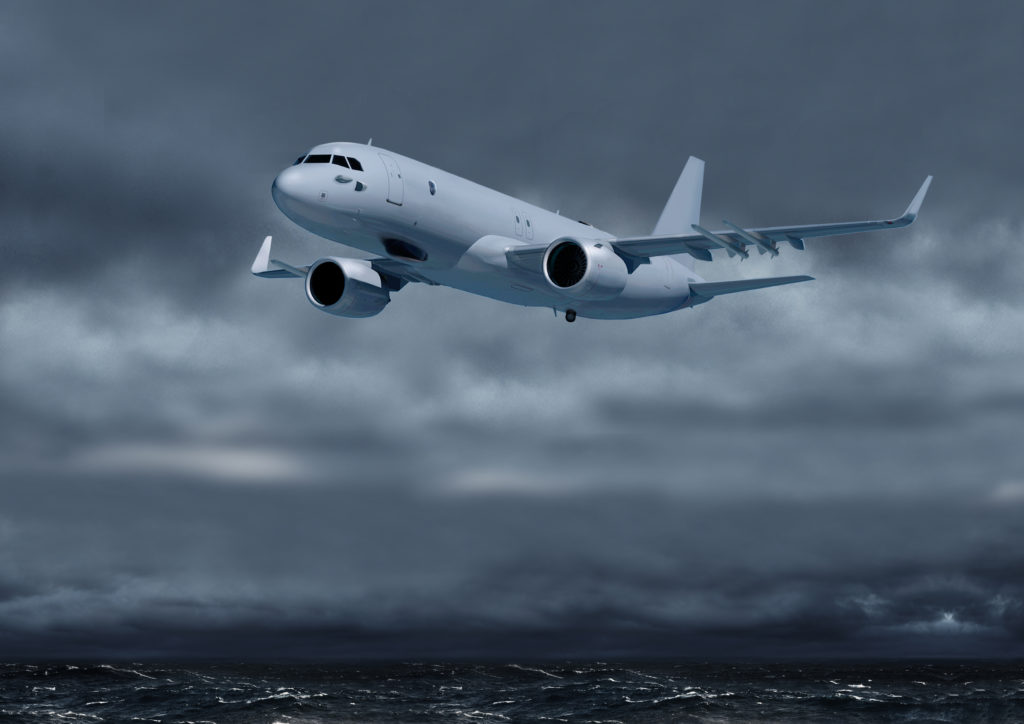
The mission package is centred on a new-generation C2 suite based on FITS (Fully Integrated Tactical System) developments with network centric communications, including data links and SATCOMs, managing a sensor package, involving an AESA SAR radar with IFF, high-definition EO/IR sensors together with an unspecified ESM/ELINT system in addition to self-protection, a MAD detector mounted in the rear fuselage, an ASW suite based on new-generation acoustic processor and sonobuoy management system. The latter can develop from the new systems being integrated on board the ATL2 through the modernisation programme managed by Dassault Aviation and Thales, including the SEARCHMASTER AESA radar benefiting from latest technologies based on Rafale combat aircraft programme, and the latest-generation digital acoustic processing subsystem (STAN) together with a new Wescam EO/IR suite, tactical picture elaborating software from Naval Group and SIAé’s upgraded tactical display consoles as well as the new SonoFlash sonobuoy system developed by Thales for the French Navy.
The Business-Jet Derived Solutions
Based on the experiences with the multi-role and swing-role GLOBALEYE AEW&C and previous ISR/AEW&C/MPA programmes, the Saab Group developed the SWORDFISH MPA solution. Based on the Bombardier Global 6000 platform already used for GLOBALEYE’s sister ship and sharing around 70 per cent communality, including mission management system, EW and self-protection systems, AESA radar, electro-optics, AIS and the majority of communication systems with the latter aircraft, Saab has refined SWORDFISH design following its launching at 2016 Singapore Air Show, receiving significant interest from potential international users. Taking advantage of the long-range biz-jet endurance and optimised low-level performances, the SWORDFISH MPA shares Bombarbier’s VISION flightdeck and introduces an internal layout centred on a mid-fuselage mission management station with crew rest/mission planning area, observe positions, galley and lavatory in the front, stowage and rotary and fixed sonobuoy launch areas in the back. Externally, the platform differs for oversize observer windows and four hardpoints under the wings capable of carrying respectively two (on the inner pylons) and one (on the external pylons) torpedoes as an alternative to anti-ship missiles and SKAD rescue pods.
The Saab-provided mission control suite is based on four-to-five multifunction and interoperable consoles with a 30-inch flat screen each, managing a sensor package, including Leonardo SEASPRAY 7500E AESA radar with ISAR/SAR modes and IFF, FLIR Systems Star SAFIRE-380HLD EO/IR payload, maritime AIS, secure V/UHF radios, SATCOM and tactical data links, Saab HES-21 integrated ESM and self-protection system with RWR, MAW and CDMS. The ASW suite is centred on General Dynamics Mission Systems Canada UYS-505 Venom acoustics suite processor with the sonobuoy receiving and location system, CAE MAD and a gravity-launching system with an operational load capacity of 100 A- or 200G- or 300 F-sized or a types combination from Ultra Electronics UK. With a range of 5,200 nm and maximum cruise speed of 450 knot reduced to 360 for long-range cruise, the SWORDFISH has a service ceiling of 12,200 metres and reduced take-off and landing distances. The typical mission profile for maritime surveillance is 200 mn transit for a 11.5-hour time-on-station patrolling at 1,650 metres with IFR reserves, reduced at 7.3-hour at 1,000 nm, in both cases at ISA standard condition at sea level with a five+ crew, full sonobuoy-load and no external stores.

The Israel Aerospace Industry’s ELTA systems subsidiary is offering its ELI-3360 G5000 MPA solution based on the Bombardier Global 5000 business jet platform already used for its family of ELW-2085 CAEW and ELI-350 MARS ISR platforms. Mastering the experience developed with the electronics package integration and modifications for these versions, IAI/ELTA has matched the Global 5000 capacities to operate at altitudes of 13,860 metres, fast climb performance, quick reaction time and fast deployment, long range/long endurance at over 6,000 nm. It has a spacious comfortable mission cabin with a mission suite centred on the ELS-8100 multi-mission tactical management system (TMS) with two-to-six mission operators with intuitive multi-role workstations and integrated open architecture, managing a communications suite with network centric datalinks and a sensor package, including ELM-2022 multi-mission radar with surveillance, imagining and tracking capacities integrated with an automatic identification system (AIS) and IFF, ELL-8382 ESM/ELINT and CESM/COMINT/Scanning DF, AMOSP 3000HD multi-sensor EO/IR/Laser turret and ELL-2160V1 self-protection suite chaff/flares/RF-jammer.
The ASW is based on an unspecified acoustic sensor suite with sonobuoys launcher and dispenser system together with a weapons and stores management system for ASW and ASuW. The ELI-3360 G5000 MPA has four underwing hard-points capable of carrying torpedoes, anti-ship missiles as well as rescue and self-protection pods. The ELI-3360 G500 MPA has been proposed for different tenders or programmes worldwide, especially where IAI/ELTA has already provided the other platforms of the Bombardier’s GLOBAL 5000 family offering communalities and service-life cost reductions.
The Turboprop Solutions

The Leonardo aircraft division is offering its ATR72 MP/ASW platform solution which, in a customised ASW version with Thales mission suite, has been developed for the Turkish Ministry of Defence. Under the MELTEM III, Leonardo is expected to deliver six ATR-72-600’s in the Turkish Maritime Patrol Aircraft (TMPA) configuration from 2019 while two aircrafts in a utility-configured version (Turkish Maritime Utility Aircraft) are already in service. Among the airframe tailored modifications, including MAD, the TMPA features four fuselage-mounted hardpoints capable of carrying up to 454 kg for lightweight torpedoes (LWT) or other payloads – including anti-ship missiles and mines, of which the front twin has been certified to carry and deliver Raytheon Mk46 Mode 5 and Mk54 LWTs for the Turkish Navy.
The Italian Air Force has been the launch customer for the ATR72MP, which was also procured by Italian Custom Service, both with a comprehensive although different mission suite. With a 23 tonnes maximum take-off weight, the ATR72MP is equipped with a Thales Avionics’ glass cockpit and two Pratt & Whitney Canada PW127M engines, allowing for a maximum cruising speed of 250 knots and an 8,250 metres maximum operational altitude. Characterised by bubble windows and in-flight operable door, the Italian Air Force’s ATR72MP has a basic eight crew complement with air force and navy personnel, including two pilots, four operators and two observers. While the mission suite is based on Leonardo’s Airborne Tactical Observation and Surveillance (ATOS) system in a maritime long-range surveillance (MLRS) version with four consoles featuring a 24-inch-high-definition multifunctional colour display and programmable entry panels, Leonardo has almost completed development of a lightweight and compact ASW suite and weapon store management. The Leonardo’s communications suite features V/UHF and HF radios with INMARSAT and SICRAL SATCOM capabilities, datalink management unit for Link 11/16, crypto, new-generation IFF, AIS and ASARS DF for SAR and CSAR missions.

The sensor suite includes Leonardo’s SEA SPRAY 7300E AESA radar and FLIR Systems STAR SAFIRE 380HD EO/IR turret, Elettronica’s ELT-800(V)2 ESM/ELINT with full radar warning capabilities in addition to an expandable self-protection suite with Leonardo’s RALM 01/V2 LWS, Hensoldt AN/AAR 60 (MILDS II) MWS and MES ECDS-2 CMDS. The ATR-72 in the ASW variant would maintain the fuselage-mounted hardpoints and MAD tail cone of the Turkish TMPA version and an enhanced Leonardo ATOS mission suite, including the ASW module, store management system for torpedoes, mines and anti-ship missiles and the acoustic system with sonobuoy stowage and launching system. Leonardo’s new ULISSES (Ultra-Light SonicS Enhanced System) ASW suite is centred on the acoustic processor handling up to 64 sonobuoys and the VHF receiver with sonobuoy localisation system, which is compatible with Ultra Electronics new-generation mini-sonobuoys. With a 200 nm transit to the search area, the on-station time for an ATR-72MP variant reaches 7.6-hour at 1,500 metres while an ASW mission conducted by the ATR-72ASW at the same distance could last almost six-hour.
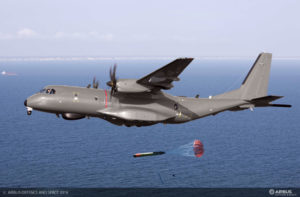
The family of Airbus’s C235 and C295 in the maritime surveillance and patrol versions has found significant international success. The Turkish Navy operates a maritime patrol and antisubmarine version of the C-235 model under MELTEM II, with a Thales-provided mission and acoustic suite with MAD and underwings hardpoints for lightweight torpedoes. 208 units have been ordered by 28 countries, as of December 2018, of which 168 aircraft have been delivered and 166 are in operation, in addition to the main transport/armed version and proposed SIGINT and AEW&C, the C295 platform saw the development of the MSA (maritime surveillance aircraft) and MPA (Maritime Patrol Aircraft) versions coming with a comprehensive mission suite based on the Airbus FITS (Fully Integrated Tactical System) that is equipping almost 100 aircrafts.
The C-295 MSA/MPA have been procured or is in service with the Portuguese, Oman, Brazilian and Canadian Air Forces and Chilean Navy in addition to Saudi Arabia Homeland Security Command, while the C-235 MSA users include the Irish Air Corp, Spanish agencies and Air Force, US Coast Guard, Colombian, Ecuador and Mexican Navies together with the Spanish and Brazilian Air Forces’ P-3 MPAs. As a military conceived solution capable of conducting the most demanding MPA tasks with high manoeuvrability and low-level flight at low-speed capabilities, together with low-life-cycle and operating costs, the C-295 MPA version comes with underwings hardpoints for torpedoes and anti-ship missiles, as well as winglets and enhanced performance engines modes offering longer endurance and fuel savings in addition to better hot-and-high capabilities and sensors and MAD accommodations.

Equipped with Thales Topdeck avionics, the comprehensive mission suite comes with custom-selected package based on FITS, communications and sensors, including Thales or other supplier’s AESA radar, HD EO/IR sensors, ESM/ELINT and optionally COMINT suites, MAD, self-protection and ASW suite centred on the acoustic processor, sonobuoy launchers and stowage. According to an Airbus released presentation, the C295 MPA with a complete ASuW/ASW suite based on four consoles-configured FITS, six operators and two torpedoes has an 8.5-hour on-station time at 200 mn.
The Canadian company’s PAL Aerospace as prime contractor with Thales Group has converted and equipped two Bombardier Dash 8 Q300 platforms with a comprehensive ASuW/ASW suite, which are in service with the United Arab Emirates Air Force. PAL’s airframe conversion includes adding observation windows, in-flight operable side door, air-drop hatch in the lower rear fuselage and an extended-range fuel system. Leading the mission system integration, Thales has provided AMASCOS (Airborne MAritime Situation and COntrol System) tactical command system controlling a sensors suite, including Thales Ocean Master 400 radar, identification/communications systems and TMS 2000 acoustics processing from Thales, FLIR Systems’ EO/IR turret, Elettronica’s ESM/ELINT and self-protection together with sonobuoy launchers and stowage. Both Saab and IAI/ELTA have been offering the above-mentioned ASuEW/ASW mission package for turboprop aircrafts, increasing the opportunities for potential solutions on the market.
Luca Peruzzi



